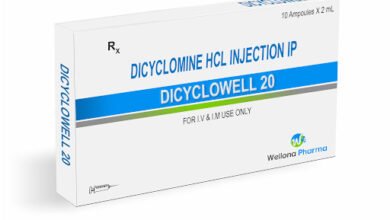Health Insurance 101: Understanding Health Insurance Terms

If your eyes glaze over at the mention of anything related to health insurance, you’re not alone. In fact, most people in America can’t define key health insurance terms.
But understanding health insurance is so important. People who don’t understand health insurance concepts wind up either spending more money than they need to on their health coverage or avoiding care they need.
Whether you get health insurance through a job, the Health Insurance Marketplace (Healthcare.gov), or a government program, arm yourself with basic knowledge so you can get the most out of your coverage.
Types of health insurance costs
Unless you have free or subsidized coverage through Medicaid or another government program, you’ll probably have a few different types of costs no matter what type of health plan you choose. These costs are often called “cost sharing.” Common costs to look out for include:
1. Monthly premium
The monthly cost you pay for health insurance coverage.
2. Deductible
The amount you have to pay out of pocket before your health insurance starts paying for any services you use. If you get healthcare services before you’ve met your deductible, you’ll usually have to pay 100% of the cost, even for services that are covered by insurance.
3. Copayment (Copay)
The set fees you pay each time you use healthcare services. Sometimes copayments, also called copays, are expected when you arrive for your appointment, and sometimes they are billed later. Copayments can vary depending on the type of healthcare provider (HCP) you see (e.g., a primary care physician (PCP) vs. a specialist) or type of service (e.g., emergency room vs. office visit).
4. Coinsurance
The percentage of healthcare costs that you have to pay once you’ve met your deductible. For example, if you have 20% coinsurance for hospital services and you get a $10,000 hospital bill, you’ll be expected to pay $2,000.
Other health insurance terms to know
Health insurance has its own terminology, which can be confusing. Some key health insurance terms to know include:
1. In-network providers
Many health plans have a set of HCPs that they contract with. The HCPs who contract with the plan are called “in-network.”
2. Out-of-network providers
HCPs who do not participate in a health plan’s network are considered “out of network.” Depending on the plan type you have, out-of-network providers may be covered at lower rates than in-network providers. That means your insurance covers less of their fees, so you’d pay more to see them.
Some plans do not offer coverage for out-of-network providers at all, which means you’d pay 100% of the cost to see them.
3. Out-of-pocket maximum
After you’ve spent money on your deductible, copayments and coinsurance, there’s a limit to what you’ll have to pay out of your own pocket each year. This limit is called the “out-of-pocket maximum.” Once you’ve reached this amount, you cannot be charged additional fees for covered services from in-network providers.
You can still be charged for care you get from out-of-network providers or for services that are not covered.
Monthly premiums do not count toward your out-of-pocket maximum,
4. Referrals
In some health plans, you have to get a referral — kind of like permission — to see specialists or other HCPs for certain services. Referrals are written orders from your PCP.
5. Prior authorization
To receive certain services or prescriptions, some plans require you to get prior authorization, which is permission beforehand or preapproval. Your HCP will usually submit forms to your insurance provider on your behalf, although it is technically your responsibility to make sure you get approval before seeking the service. If you don’t get prior authorization for services that require it, the health plan can deny your claim and you could be left paying for all of the service on your own — or not getting it at all.
6. Open enrollment
Open enrollment is the set time each year when you can sign up for health insurance or switch plans. The open enrollment time varies by company for job-based insurance and for different programs such as Medicare or the Health Insurance Marketplace. Outside of the open enrollment period, you cannot switch plans unless you have a change in life circumstance, called a “qualifying life event,” that allows you to have a special enrollment period.
7. Special enrollment period
If you have a change in circumstance, you may qualify for a special enrollment period. That means that you can sign up or switch insurance outside of an open enrollment period. Circumstances that might qualify you for a special enrollment period include changes in family structure (e.g., having a baby, getting married or divorced), moving or losing job-based benefits.
8. High-deductible health plans
High-deductible health plans (HDHPs) are plans with high deductibles, meaning the amount you pay out of pocket before your health insurance starts covering services is higher than a typical amount. The threshold for an HDHP changes each year. In 2022, HDHPs were defined as plans with deductibles of at least $1,400 for individuals and $2,800 for families. Any of the common health plan types can be an HDHP.
9. Health savings accounts
Health savings accounts (HSAs) are savings accounts that let you use tax-free dollars for qualified healthcare expenses. HSAs are often paired with HDHPs to help you pay healthcare costs before you meet the deductible. The balance in your HSA is yours, so unused amounts roll over and can build up over time.
Types of health plans
There are several different types of health insurance plans, with different costs and rules. The most common types of health plans include:
1. Health maintenance organizations (HMOs)
HMOs often have the lowest monthly premiums, but they’re also usually the most restrictive. In an HMO, you must have a PCP and get referrals from that PCP to see specialists. An HMO only covers services you get from HCPs who participate in their network. Outside of that network, HMOs don’t usually cover any costs unless it’s an emergency.
2. Preferred provider organizations (PPOs)
PPOs tend to have higher monthly premiums than HMOs because they give you more flexibility. PPOs don’t require a member to have a PCP or get referrals to see specialists. Like HMOs, PPOs have a network of contracted HCPs. You typically pay more, but not the full cost, to see HCPs outside of the plan’s network.
3. Point-of-service (POS) plans
POS plans are like a cross between HMOs and PPOs. POS plans may require you to have a PCP and to get referrals before seeing specialists. POS plans have contracted networks of HCPs, but tend to allow you to see HCPs outside the network for a higher cost. POS premiums typically fall between HMOs and PPOs.
Source link
#Health #Insurance #Understanding #Health #Insurance #Terms



